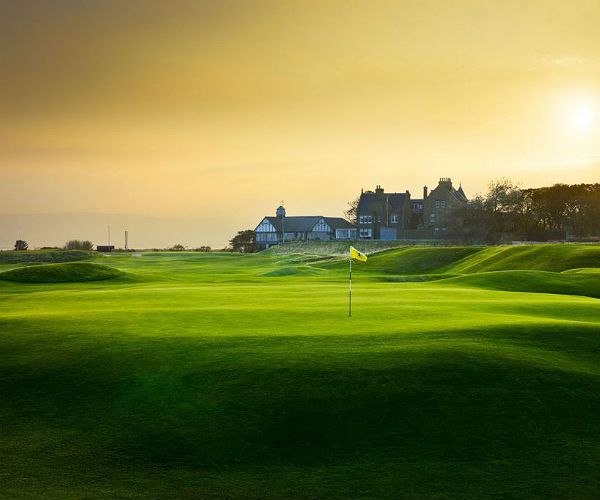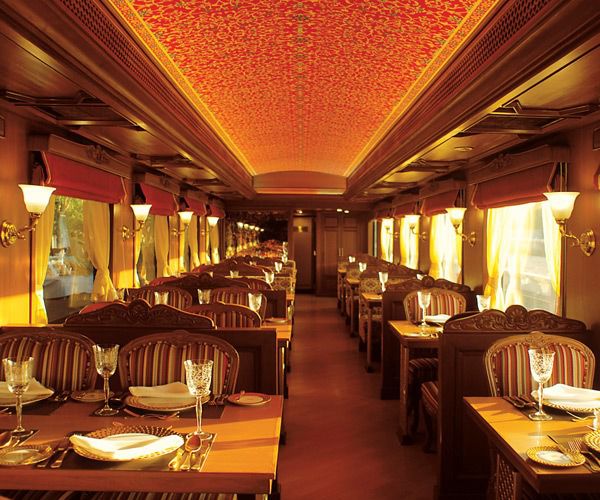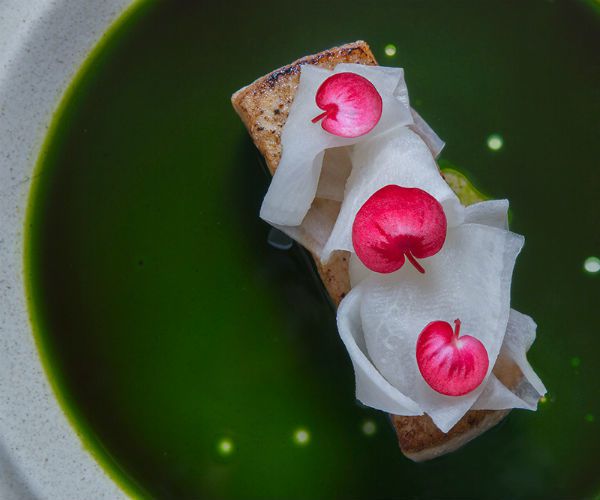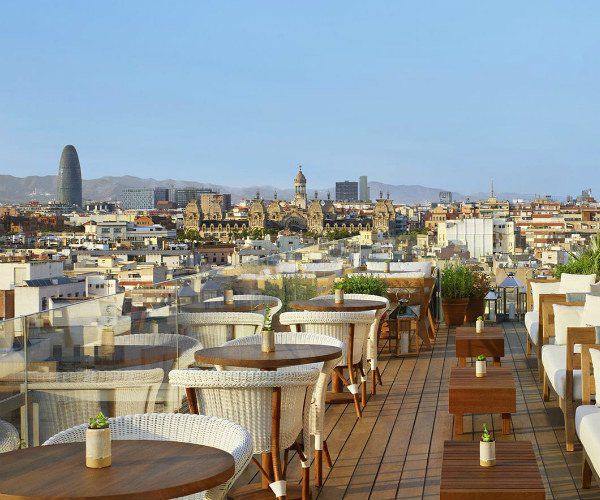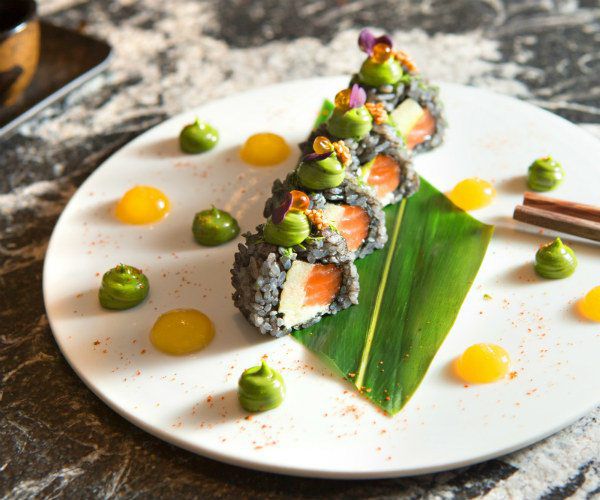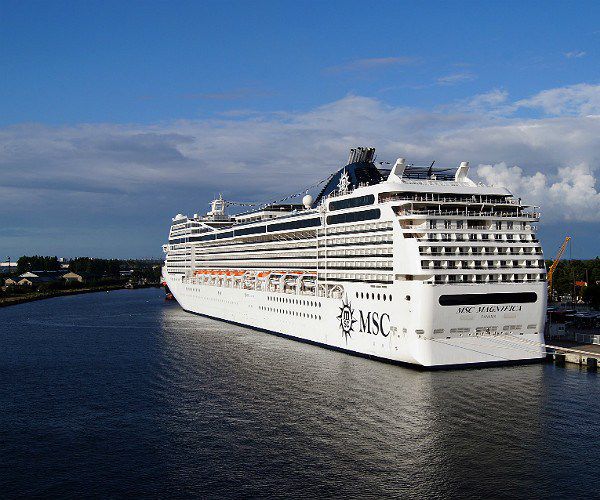The summer’s social calendar in England

Something palpable happens to the English social calendar when summer arrives. Frocks are brushed down, hampers are fastened, shoes are shined. It’s when “The Season” coughs politely and shifts into motion (with perhaps just one last check that the brolly’s in the boot). The prestige events of late spring and early summer have in some cases been in place for centuries– but which of them best sums up the peculiarly British affection for upper-class gatherings? Here’s a look at six of the most quintessential events in the calendar.
Wimbledon
The heritage: The first Wimbledon Championship took place at the All England Lawn Tennis & Croquet Club in 1877. It was won by a Harrow-educated London aristocrat, Spencer Gore, who also played cricket for Surrey.
The atmosphere: Strawberry-fuelled and respectful. Communal moments of raucous abandon on Centre Court have become common in the Murray era, but can generally be muted by a firm “quiet, please” from the umpire.
Did you know? Frenchman Jean Borotra competed in the men’s singles championship on a mind-boggling 35 separate occasions between 1922 and 1964. He won twice, in 1924 and 1926, and was 65 years old on his last appearance in the draw.
Cucumber Sandwich Rating: 7/10
Trooping The Colour

The heritage: The ceremonial parade dates back to the early 18th century, and has marked the monarch’s official birthday since 1748. These days the Queen – who also has a birthday on 21 April, lest the royal cake-makers grow idle – accepts the salute of some 1,400 officers.
The atmosphere: Massed bands, packed stands and a row of vast Union Flags stretching the length of The Mall. There’s also a fly-past. The parade itself begins at 10.30 in the morning, so is essentially just an hors d’oeuvre (a nice smoked salmon blini, perhaps) to social events later in the day.
Did you know? The Queen has only missed the Trooping The Colour ceremony on one occasion – in 1955, when the event was cancelled due to a national rail strike.
Cucumber Sandwich Rating: 7/10
Royal Ascot
The heritage: The first race meeting took place at Ascot as long ago as 1711. The story holds that Queen Anne, while out riding near Windsor Castle, suggested the site as “ideal for horses to gallop at full stretch.” More than 300 years later, she’s been safely proved right.
The atmosphere: Dress-coded pageantry with a hefty helping of flamboyant hats, particularly if you’re here on Ladies Day. The five-day event is British horse racing’s most valuable meeting, and there’s Michelin-starred cuisine on hand to take the edge off the inevitable lost bets.
Did you know? The Royal Enclosure was created after an unsavoury incident in 1832, when a one-legged naval officer named Dennis Collins was arrested for high treason after throwing a stone at King William IV.
Cucumber Sandwich Rating: 7/10
Chelsea Flower Show

The heritage: Originally known as the Royal Horticultural Society’s Great Spring Show, the event first took place in 1862 in Kensington. It moved to the grounds of the Royal Hospital in Chelsea in 1913, and has stayed there ever since.
The atmosphere: The Fashion Week of the gardening world draws celebrities, socialites and flower-fanciers to West London in their droves. Awards are handed out to the Best Show Garden, the Best Fresh Garden and the Best Artisan Garden, but for all its genteelness, the show is fiercely competitive.
Did you know? That plucky perennial of the British garden – the gnome – was banned from appearing at Chelsea for more than 150 years. The edict was finally relaxed in 2013.
Cucumber Sandwich Rating: 8/10
Glyndebourne
The heritage: Glyndebourne, a stately home on the edge of the South Downs, has hosted a summer opera festival since 1934, when founders John Christie and his wife Audrey Mildmay set up a 300-seat theatre here. Today’s auditorium holds four times as many people.
The atmosphere: Thumping drama, elaborate sets and some of the world’s best sopranos. Mozart tends to figure prominently, as do raspberry trifles and picnic furniture. A black tie dress code is optional, but widely observed.
Did you know? Luciano Pavarotti made his one appearance at the festival in 1964, as a 28-year-old tenor in Mozart’s Idomeneo.
Cucumber Sandwich Rating: 9/10
Henley Royal Regatta

The heritage: The first Regatta took place in 1839 over the course of a solitary afternoon. Twelve years later it received its first royal patron, HRH Prince Albert, and has held its current name ever since. These days the competition is held across five days and features more than 200 races.
The atmosphere: Blazers, club ties, summer dresses (strictly below the knee) and clinking glasses. The rowing, at times, is essentially just a pleasantly splishing backdrop to the social occasion. And despite drawing crews from all over the globe, it’s a vehemently British event.
Did you know? When he was younger, actor Hugh Laurie rowed here regularly. He once wrote that “although I have competed in the Regatta three times, and been a spectator since I was cork-high to a Jeroboam, I’d be the first to admit that Henley is a very peculiar institution.”
Cucumber Sandwich Rating: 9/10
By Ben Lerwill www.avis.co.uk/inspires/
The best whiskey and golf course pairings in the British Isles

Both whiskey (or whisky, if you’re in Scotland) and golf got their starts in the British Isles, and it ends up, they pair well together. The long histories of the spirit and the sport mean any local place will have its own version of the story to tell, and you can get a lot of different flavors in the glass and on the green. If you’re traveling in Ireland, Northern Ireland, or Scotland for one, you may as well plan to enjoy the other as well! Here are five of my favorite pairings of golf courses and distilleries in Great Britain and Ireland.
Glenmorangie and Royal Dornoch
Dornoch is a peaceful town on the northeast coast of Scotland overlooking the Dornoch Firth (or estuary), which is a nature reserve. The Glenmorangie Distillery was founded there in 1843 and has attempted to capture this peaceful spirit in the whisky it bottles ever since. The scotch brand’s name even means “valley of tranquility” in Scots Gaelic. The Royal Dornoch Golf Club was founded just 33 years after the whisky distillery, and its spellbinding landscape offers that same inner peace. The Championship course presents the classic challenges of a natural links course, and thanks to its relaxed atmosphere, the club is a must-play for many golfers around the world.
Bushmills and Royal Portrush
Bushmills Distillery and Royal Portrush like to set themselves apart with their unique achievements: Bushmills is the oldest distillery in the world (first licensed in 1608), and Royal Portrush is the only golf course in Northern Ireland to host The British Open. They are both important destinations in County Antrim, which might otherwise be just another small community of fishing villages. I recommend spending the morning golfing and then touring the Old Bushmills distillery in the afternoon to wind down with your favorite of Bushmills’ varied flavors.

Laphroaig and Machrie
Laphroaig is a Scotch whisky from Islay that is renowned for its rich flavor, and they’ve been dividing the opinion about Scotch locally and abroad since 1815. The taste may not be for everyone, but a tour of the grounds and a round of tastings of their various casks and years may help you find a flavor you love. The Machrie has also been causing a stir in recent years, with construction to upgrade the links course to a fully-modern version causing some traditionalists to question the remaining authenticity. The course was famous for having more blind holes than any other, and for having a wild, untamed quality, like the golf courses of yore. Have the updates to the course lost it its charm? I don’t think so, but you might as well play a round to decide for yourself.

Glenkinchie and Muirfield
When touring Edinburgh, you should make time for Edinburgh Castle, the Stone of Destiny, and Arthur’s Seat, of course. But it’s also worthwhile to take a tour just outside the city and see some of the surrounding countryside. I recommend a day on the links at Muirfield and a tour of the Glenkinchie Distillery for some Scotch whisky. Muirfield, home to “The Honourable Company of Edinburgh Golfers”, was updated in 2010 and 2011 to make it a more challenging championship course for the 2013 British Open, and the changes received universal approval. The Club will allow women to play as guests or visitors any day of the week, but they are pretty strict about two-ball match play, regardless of your handicap. Glenkinchie, by contrast, offers, several tour options depending on what level of Scotch tasting you’re interested in, including a tasting of Scotch from around the country.

Kingsbarns and The Old Course
I’d be remiss to mention golf in Scotland without bringing up the Home of Golf: The Old Course at St. Andrews. The course is arguably the most popular destination in Scotland for the sport, due to its six centuries of history and renowned difficulty of play. After the excitement of securing a tee time and crossing the Swilcan Bridge, it’s always nice to finish up with a dram of whisky. I like to pair the old with the new and recommend a trip to nearby Kingsbarns Distillery. This new addition to the scotch whisky scene was a dream until 2014, when the Wemyss family turned an aging and derelict farmhouse into their top-of-the-line modern distillery. The first single malt from Kingsbarns, the Dream to Dram, was released in early 2019, and produces a light, fruity and floral Lowland malt worth adding to your collection. A tour and tasting at Kingsbarns are a perfect addition to a week in St. Andrews.

With over 120 distilleries in Scotland to match with 550 golf courses, and 30 whiskey distilleries in Ireland to go with the 300 golf courses, there are sure to be hundreds of pairings worth trying. What are your favorites?
By Ravi Coutinho of worldwidegolfadventures.com
Why airlines can get away with poor customer service
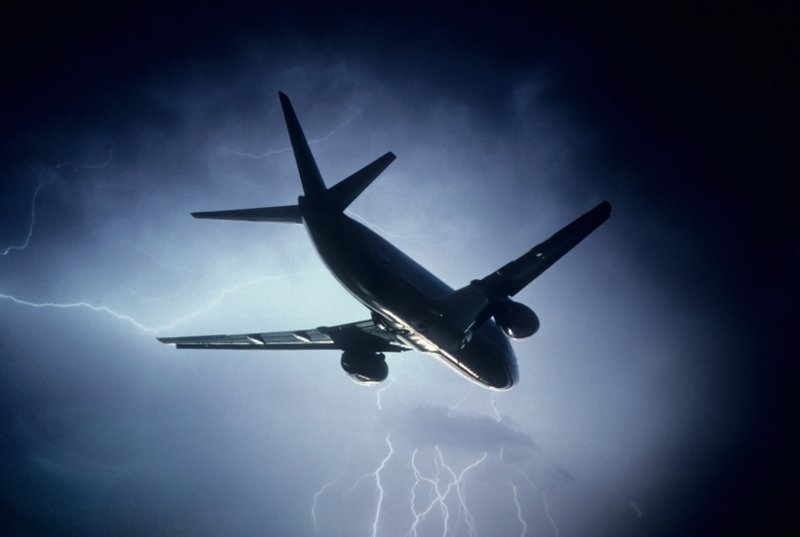
As much as other types of companies might want to ignore their lowest-margin patrons, most don’t have that luxury.
A security guard stops a customer as she tries to enter a well-stocked aisle in a large department store. “Sorry, ma’am,” the guard says. “This sale is for our silver, gold, and platinum shoppers only.” He points her toward the meager discount corner at the back of the store, where bronze-status shoppers are allowed. She passes attendants who smile only at the elite shoppers, offering them refreshments and guiding them toward the best deals. When she stops for gas on the way home, she gets in a long line for the basic pump, while the priority pump sits empty and unused. At the grocery store, she doesn’t have enough points to approach the organic produce.
This beleaguered consumer lives in an alternate reality where businesses can discriminate between their high-value and low-value clientele at will, enticing the biggest spenders to stay while marginalizing bargain hunters and coupon cutters. Most companies couldn’t get away with triaging their customers this way. But some already do: airlines.
This inequality is enshrined in frequent-flyer programs. They’re not like typical rewards systems, which simply encourage loyalty with discounts. Instead, they create elaborate hierarchies, discriminating between platinum flyers and coach passengers in nearly every step of the air-travel experience, from booking to baggage claim.
These programs also help airlines gather data on their passengers. They track details like customers’ favorite routes, the fares they pay, and extra services they buy, says John Strong, an aviation expert who teaches at William and Mary’s business school.
David Dao, the doctor who was dragged from his seat on a United flight last weekend, was a victim of the airline’s algorithm (and, of course, of security officers in Chicago, who left him with a concussion, a broken nose, and two missing teeth). United’s contract of carriage, which lays out how the airline will treat its passengers, outlines how passengers might be “denied boarding involuntarily”:
The priority of all other confirmed passengers may be determined based on a passenger’s fare class, itinerary, status of frequent-flyer program membership, and the time in which the passenger presents him/herself for check-in without advanced seat assignment.
Dao was more likely to be chosen than others because he wasn’t connecting to another flight, and based on the fact that the algorithm selected him, he probably didn’t rank very highly in United’s rewards program. Strong says a passenger’s itinerary and his or her value as a customer are the main criteria an airline considers when picking who to bump from a flight. “While airlines have the information to create a more detailed pecking order, they don’t go much beyond that in practice,” Strong said.
Airlines can game out just how much each customer is worth, and treat them accordingly, said Joseph Turow, a professor of communications at the University of Pennsylvania. “Irrespective of any individual fare, they have this overarching notion of who their valued customers are, and what their lifetime value is,” he said. “And because of the structure of the system, they can take advantage of it to the point of being mean to people.”
Business travelers, who are less likely than leisure travelers to comparison-shop for airfare, reap the rewards of pricey, company-sponsored travel in the form of miles. They’re pampered, while passengers in the back, who are more likely to have simply searched for the best deal, are left without many frills.
Giving priority to some isn’t a practice unique to the airline industry, says Strong. “More valuable customers at brokerage houses get dedicated access communications and cheaper trades; hotels offer free wi-fi and other complimentary benefits to their best customers,” he said. “Almost anyone who has a loyalty program differentiates benefits by the value of different groups of customers.”
Other companies “don’t have nearly the ability to be as arrogant as the airlines are.”
But the gap between coach and business class is particularly wide. That might partly stem from a lack of competition in the industry, which gives airlines a relatively large amount of control over their customers. Because of the disparity between premium and economy fares—and companies’ willingness to buy expensive seats for their employees, sometimes at the last minute—airlines are mostly interested in luring business passengers. But as they attract those travelers with fancy perks, they provide the economy cabin with only the bare minimum.
One reason this is the status quo is that there’s little budget passengers can do to avoid an airline they don’t like. The big U.S. carriers have near-monopolies over air travel from many (though not all) major American airports, leaving price-sensitive travelers little choice when they fly. That makes boycotting a major airline nearly impossible, as Christopher Ingraham wrote in The Washington Post this week. And so carriers can get away with a lot more than, say, retailers or gas stations: If Nordstrom’s starts treating its low-margin customers poorly, they’ll just walk on over to Neiman Marcus, or Bloomingdale’s, or Saks.
Those retailers can, however, discriminate between their high- and low-value customers more subtly. They might dole out coupons and discounts to encourage their “best” shoppers to keep coming back—and withhold them from the “bad” ones, like those who have a habit of returning items, or who buy things that don’t make the company very much money. Online stores can do this more surreptitiously, by showing different shoppers different prices and ads, and nudging them toward—or away from—certain products and services.
One thing that might be warding off the platinum-sale alternate reality in these other industries is antitrust law. These regulations help keep retailers from forming huge, inescapable monopolies—the kind that United, Delta, American, and Southwest enjoy in parts of the country, thanks to lax regulation of the industry in recent years—and prevent them from deploying these airline-perfected tactics.
For now, Turow says, other industries “don’t have nearly the ability to be as arrogant as the airlines are.” They have to be quieter about their discriminatory tactics, and maintain a pleasant enough atmosphere that won’t drive away their customers. “Whether this will ever change so they can get such a grip on people,” Turow says, “I don’t know.” But as antitrust policies weaken—as they have over the past few decades—and monopolies grow in power and number, the distance between airlines and the rest of the business world might be in danger of shrinking. theatlantic.com
The best travel experiences in Bolivia

Wild, untouched, and still decidedly off-the-beaten-track, the appeal of travel in Bolivia is gradually growing to match its most-visited Andean neighbor, Peru. Boasting some of the most dramatic mountain landscapes in Latin America, cloud forests, deserts, volcanoes, and the Amazon basin – this superbly diverse country has much to explore. Undoubtedly at a much earlier stage in its tourism development than the surrounding countries, luxury options in Bolivia are more limited in range, but nevertheless exceptionally rewarding. A true riot for the senses, here are some of our favorite one-of-a-kind luxury experiences to enjoy during a trip to Bolivia.
A luxury stay in Zona Sur, La Paz
Bolivia’s energetic Andean capital, La Paz is a booming city that has something for everyone. The city itself houses a host of interesting Spanish colonial and republican-period buildings, as well as a variety of touristic sites linked to the city’s many indigenous cultures which in Bolivia are still very much thriving part of everyday life for the majority of the population. Home to an increasingly affluent population of artists and business people, La Paz’s stylish and modern Zona Sur (‘South Zone’), peppered with the mansions of the uber-elite, is the place to stay in the city for a luxurious trip. Some of the best restaurants, bars, and clubs in Bolivia are located in this area as well as the country’s finest hotels. Our favorite is ATIX, the first design hotel in Bolivia. This sleek and modern boutique combines stylish contemporary luxury with the authentic charm of Bolivian cultural heritage. Rooms are decorated in a chic, muted tones, broken up with the vivid colors of the exclusive local artwork by Bolivian artist Gaston Ugalde. ATIX’s crowning glory is its relaxed lounge bar and delightful indoor pool with panoramic views of the surrounding mountainsides. For a luxurious stay in an eclectic and charming city, Zona Sur has a lot to offer.

Airstream campers on the Salar de Uyuni
Probably rightly Bolivia’s most famous attraction, the extensive Salt Lakes in Uyuni are one of the most surreal and breath-taking landscapes on Earth. One way to enjoy a tour of this exceptional region in unparalleled style is by spending nights out under the crystal-clear starry skies in your own deluxe classic airstream campervan. These well-equipped and cozy campers offer fabulous accommodation, as well as the services of a private chef, guide and driver to set up camp and prepare meals for you as you explore the delights of Bolivia’s rugged and striking southern altiplano in supreme comfort, with entirely personalized service.

Private boat on Lake Titicaca
A land of many superlatives, Lake Titicaca, perched on the border between Bolivia and neighboring Peru is the highest commercially navigable lake in the world and easily one of the highlights of a visit to either country. The cobalt blue of the lake, framed by the snow-capped peaks of the Andes in the background makes for a striking picture and the perfect place to enjoy indulgent treats during a luxury tour of the Andes. The best way to spend a relaxed evening by the lake is to enjoy a private boat trip at dusk, watching the sunset over this magnificent scenery with a glass of champagne in hand.

La Paz’s food culture
Benefiting from the same bounteous variety of unusual and exotic ingredients as Peru, the capital of gastronomical innovation in Latin America, Bolivian cuisine is equally as forward-thinking and diverse, especially in the capital city. La Paz offers a huge range of boutique bars and eateries where the most exceptional emerging talents in Bolivian gastronomy offer their often-experimental fusion cuisine. One of the most exceptional culinary experiences in Bolivia is an exclusive evening meal at Gustu, an innovative restaurant in Zona Sur, offering a sophisticated menu of modern Latin American dishes, celebrating the flavors of local produce, traditional Bolivian cooking techniques and the avant-garde culinary techniques of high-end European restaurants. We recommend booking a table in advance to enjoy a delicious meal of the highest quality as part of a luxury holiday in Bolivia.

Glamping in Bolivia’s countryside
With some of the most remote and unspoiled scenery in Latin America, Bolivia is a wonderful destination for lovers of the great outdoors. However, exploring the far-flung corners of this rugged paradise does not have to come at the cost of great accommodation and service. Often hundreds of kilometers from the nearest city, some of Bolivia’s best kept secrets are best enjoyed by glamping in the vast wilderness. With a spacious tent including a double bed with luxurious linens, complete with a coffeemaker and cozy armchairs, you can experience a blissful solitude in a unique setting with a private chef, driver and guide – either exploring the jungles of the Madidi, trekking through the Andes, or sleeping under the stars in the arid deserts of the south.

By Simon Williams from humboldttravel.co.uk
The best train journeys in the world

One of the best ways to travel and see the world’s sights is by train. Here are some of the most spectacular trains and train journeys around the world, from classic journeys such as going from London to Venice on the Venice Simplon-Orient-Express to travelling from north to south across Australia and making your way from Bangkok to Singapore in style.
The Ghan, Australia
The legendary Ghan, named after the 19th-century Afghan pioneers who explored the outback, traverses the entire vast length of Australia from north to south, between Darwin and Adelaide, covering nearly 3,000km on a 3-day/2-night journey. Travel through vast rust-red plains of wild horses and kangaroos, stopping off in Alice Springs, Katherine, where you can cruise on the gorge, and the unique underground town of Coober Pedy. Onboard, enjoy luxurious accommodation and gourmet cuisine.
Belmond Andean Explorer, Peru
The luxurious Belmond Andean Explorer takes you on one of the highest and most scenic train journeys in the world. Glide from Cusco to Lake Titicaca or Arequipa, past ancient kingdoms and natural wonders such as the Colca Canyon and the snow-capped peaks of the Andes, and keep an eye out for llamas and alpacas. Breathe in the fresh air from the observation deck before gathering in the lounge car for a drink in the evening.

The Maharajas’ Express, India
Experience India in style onboard the Maharajas’ Express, whose lavish interiors, several restaurant and lounge cars and attentive butlers make it fit for a king. Travel to bucket-list destinations such as Delhi, Agra, Jaipur, Jodhpur and Mumbai on an unforgettable trip with ever-changing views – and visit the tigers in Ranthambore National Park along the way. Back onboard, take in traditional music and dance performances.

The Venice Simplon-Orient-Express, London to Venice
The iconic Belmond-owned Venice Simplon-Orient-Express is an unforgettable way to travel to the beautiful city of Venice. Step aboard in London – you’ll even be serenaded by a band on the platform as you depart – and spend a memorable night in a comfortable cabin (pick one of the opulent Grand Suites for a special occasion). Amidst interiors of plush fabrics, polished woods and sparkling crystal, treat yourself to a delicious afternoon tea, and be entertained by a pianist over a cocktail.

Bullet train, Japan
Japan’s bullet train has become an icon of sleek design and impressive speed, and as well as getting you from A to B in super-quick style, it is a contrast to the idyllic, serene landscapes it travels through. Zip from Tokyo to the traditional ryokans and hot springs of Hakone and the peaceful and beautiful shrines of Kyoto, where you can slow down and relax to a more serene pace of life.

The Belmond Eastern & Oriental Express, Asia
The Belmond Eastern & Oriental Express exudes old-world elegance and offers a luxurious and effortless way to explore some of Asia’s big hitters. Go from Bangkok to Singapore, seeing the Cameron Highlands, Penang and Kuala Lumpur en route, stopping off for a cruise on the famous River Kwai. Watch the scenery pass by from the observation car, where you can linger over a drink as night falls.

The Rocky Mountaineer, Canada
Take the Rocky Mountaineer through the incomparable landscapes of the Rockies on a memorable holiday in Canada. Wind your way between the mountains, rivers, lakes and postcard-perfect snow-capped alpine scenery, as well as wildlife such as bears and moose. The Gold Leaf experience offers prime viewing opportunities, with a deluxe bi-level glass-dome carriage as well as delicious a la carte meals.

By Thomas Ryves of www.exsus.com
The best nature destinations in Brazil

Luxury tourism to Brazil is back in focus with the news that Virgin Atlantic recently announced that they would launch daily flights on their Dreamliner fleet between London Heathrow and São Paulo in 2020. Of course, Brazil’s beaches and Rio de Janeiro are on the wish list of most international travellers, but there has been a distinct rise in demand recently for Brazil’s nature destinations such as the Pantanal and Amazon. Everyone knows the legend of the Amazon, the world’s largest tropical rainforest, famed for its biodiversity and crisscrossed by thousands of rivers including the powerful Amazon itself. But few are aware that Brazil is also home to the planet’s largest wetland, the Pantanal region – with its own spectacular appeal, which for centuries has attracted attention of world-leading biologists and botanists. Brazil is quite simply the country with the greatest and most fascinating biodiversity on earth. Its immense area subdivides into different eco regions in several biomes; the jungles of the Amazon Rainforest and the Atlantic Forest, the tropical savannah of the Cerrado, the xeric shrubland of the Caatinga, and the immense wetland area, the Pantanal. It should surprise no one that a great percentage of the word’s undiscovered flora and fauna species are located here.
Here are our top five picks for where you can experience the ultimate in natural Brazil.
Anavilhanas National Park, Amazon Wetlands
Close to the Rio Negro at the heart of the Brazilian Amazon. Anavilhanas National Park comprises about 400 individual islands nestled within a vast stretch of untouched rain forest. The Amazon rainforest is the world’s largest equatorial forest, stretching over 6.5 million Km2 and covering over 40% of Brazil. The Rio Negro is the biggest tributary of the left bank of the Amazon River and is the world’s longest dark water river, with over 720km of navigable water.

Visitors to Anavilhanas National Park can participate in activities such as nocturnal safaris, where they can spot birds, sloths, snakes and alligators. By day, visitors can see pink and grey dolphins in the river, canoe along waters and between trees, and fish for piranha. On the dry forest floor, expert guides can tell visitors about trees, wild fruits, survival strategies and medicinal herbs. It’s possible to stay in lodges within the park that have facilities such as pools that overlook the river and a 13m high observation tower with stunning views over the river.
Cristalino National Reserve, Amazon Forest
This region of the Amazon lies at an altitude of between 300 and 450 metres above sea level and therefore the rivers do not generally flood the forests. For this reason, the predominant vegetation here is the evergreen forest (terra firma) with tall and well-formed trees.

This is one of the richest destinations in the Amazon for biodiversity and its possible to observe mammals, butterflies, orchids and endemic birds, such as the white-cheeked spider monkey (Ateles marginatus), red-nosed saki (Chiropotes albinasus), cryptic forest falcon (Micrastur mintoni), crimson-bellied conure (Pyrrhura perlata), black-girdled barbet (Capito dayi), Brazilian tapir, sloths and giant otters. Other, less commonly sighted species include the collared anteater (Tamandua tetradactyla), giant anteater (Myrmecophaga tridactyla), tayra (Eira barbara) and shy three-toed and two-toed sloths (Bradypus variegatus and Cheloepus didactylus). Encounters with jaguar, black panther (both variations of Panthera onca) and puma (Puma concolor) occur perhaps once or twice a year.
Pantanal
Located in the geographic centre of South America, the Pantanal is the largest wetland plain on the entire planet. Its fields and mountain ranges, bays, rivers and lakes cover an extremely flat area of 210,000 km2, fed by tributaries of the Paraguay River, which runs through the Brazilian states of Mato Grosso and Mato Grosso do Sul, as well as Bolivia and Paraguay. The unique combination of location, gently sloping topography and seasonal rise and fall of the waters, characterised by intense rainfall in summer, gave rise to a lush, mega-diverse biome.

The imposing and magnificent scenery is the habitat of the largest concentration of wildlife in the Americas. It shelters over 650 species of birds, 400 species of fish and 80 species of mammals, many threatened with extinction. In 2000, the Pantanal wetland was designated a World Natural Heritage and World Biosphere Reserve by UNESCO. Ecotourism projects here are well established, for example, the Caiman Ecological Refuge was established in 1987 as the first ecotourism operation in the Southern Pantanal and operates an internationally recognised Nature Conservation Programme, which maintains the private reserve and supports various research and species management projects.
Iguassu National Park
Home to the sensational Iguassu Falls, a three kilometre chain of 275 individual cascades where water flows at 1000 cubic metres per second. This natural escape also offers thrills and excitement in abundance: helicopter trips over the river gorge and jungle treks to view amazing wildlife including colourful toucans, monkeys, capybaras and giant butterflies.

Lucky visitors once a month can join an exclusive full moon tour to witness a sight rarely seen by most in their lifetimes – the lunar Rainbow. It’s a mystical experience, perhaps only surpassed by magnificent bird’s-eye-views of Devil’s Throat from helicopter.
Ibitipoca State Park, Atlantic Forest
The white sands of Reserva do Ibitipoca’s region resemble beach dunes, and rightly so! Over 600 million years ago, this area was the bottom of the sea and slowly rose up as the Mantiqueira mountain range. Today only 7% of the Atlantic Forest remains compared to estimates made at the discovery of Brazil 500 years ago.

The Atlantic Forest is one of the richest ecosystems of the planet, with about 10 thousand species of endemic plants and has more diversity per hectare compared to many biomes. Unfortunately, over 60% of species threatened with extinction in Brazil live in the Atlantic Forest and one out of four animals native to this region are endangered. Ibitipoca is located within the heart of the Atlantic Forest and due to its unique topographical and geological characteristics, you can find distinctive landscape here: islands hidden in the mountain’s curves that contain rare and unique endemic species of flora and fauna – gnarled trees, cacti, orchids, candeia and bromeliads – over 180 flowers, 400 lichens, 140 orchids, and 60 bromeliads.
By Simone Scorsato
http://www.blta.com.br/
10 of the world’s most scenic stargazing holidays

The Milky Way over the desert, Norwegian Lights in Tromso and a planet-themed cruise to New York – there are all sorts of ways to build a holiday around star-gazing… The total solar eclipse which takes place on July 2 will be visible across parts of South America including the Coquimbo and Atacama regions of Chile. The city of La Serena is the destination for escorted tour specialist Wendy Wu, which has a dedicated itinerary departing from Santiago. Astronomy expert Dr Stuart Clark will be on hand to lecture before and during the eclipse, which takes place around 4pm local time.
Axe-wielding robbers steal €400k of jewels from luxury Paris hotel
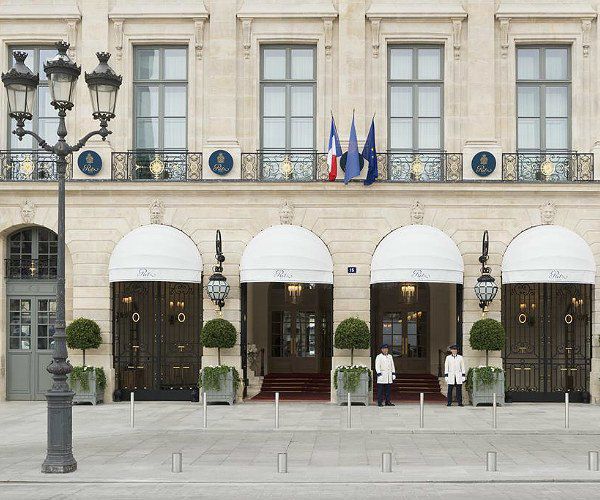
French police are searching for a team of robbers who stole thousands of euros’ worth of jewels and luxury clothing in a nighttime raid at a plush hotel in Paris. Two men wearing balaclavas and gloves entered the Peninsula hotel, just a stone’s throw from the Arc de Triomphe, shortly after midnight and held employees at gunpoint, police sources said. One of the attackers then used an axe to break into four display cases, making off with items worth a total of €350,000 to €400,000. An accomplice then drove them away in a car that was found burning shortly afterwards in the suburb of Neuilly-sur-Seine, west of the capital.
First class is disappearing from airlines
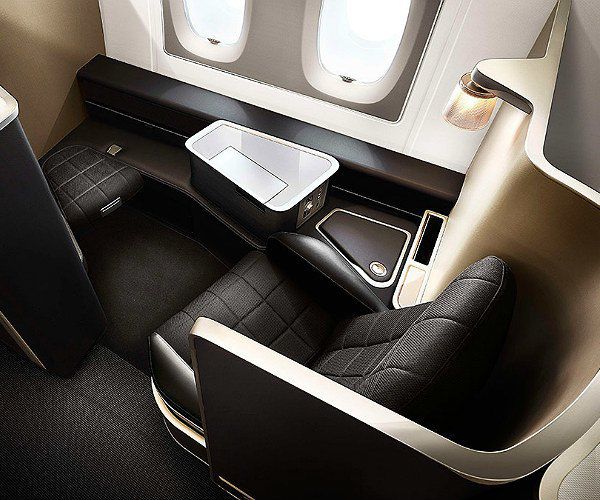
First class is disappearing at a worrying rate. As an increasing number of airlines opt to either reduce capacity or eliminate it completely, Simple Flying asks why, and what’s going on in the world of premium travel? If you’re keen to fly first class, good luck in finding a seat. Across the board, first class has been steadily disappearing from commercial jets. In the long haul market, the majority of the big names have substantially reduced the number of first class seats on board, often by several hundred thousand.
Stonehenge and the battle over a $3 billion tunnel under one of the world’s most famous prehistoric sites
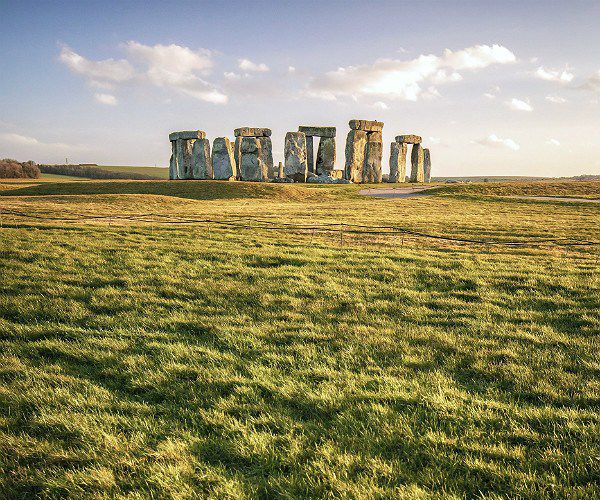
For millennia Stonehenge has been the centrepiece of Neolithic funerals, druid festivals and pagan ceremonies. Now the iconic monoliths find themselves at the centre of a battle over traffic and money — and the potential destruction of priceless artefacts. The British Government wants to plunge a 2-kilometre, $3 billion tunnel underneath the Stonehenge World Heritage site — which houses one of the planet’s most iconic prehistoric monuments. Just a stone’s throw from the monoliths is the busy A303 highway, a road which connects London with south-west England.
Why luxury resorts in Cyprus are installing ‘cat hotels’ for strays

We’ve all come across stray cats in European holiday destinations. They’re a dime a dozen in places like Greece and Cyprus, and people tend to either love them or loathe them. For those in the former category, seeing thin or injured felines lurking around is a sorry sight to behold. For locals and hotel managers, their presence is a nuisance. Whatever your stance, no-one wins when it comes to an oversized stray cat population.
Five Places to Chow Down for Cheap in Washington, DC
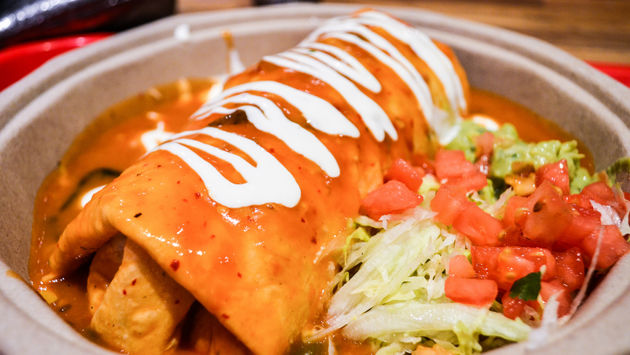
PHOTO: Fresh and delicious Mexican food comes cheap at District Taco. (photo via Flickr/m01229)
Touring Washington, D.C. can get expensive. But it can also work up quite the appetite. While there are countless bars, restaurants, diners, eateries and fast-food joints visitors can pop into for a satisfying bite in the nation’s capital, there are a few that stand out for their combination of deliciousness, quality, customer service and above all, price.
Regardless of whether you’re looking to sit down and take your time or eat on the run, these spots are perfect for chowing down on a budget.
Ben’s Chili Bowl
A D.C. institution, Ben’s Chili Bowl has earned a stellar reputation in the decades since it was founded in 1958 thanks to its beloved signature dish, the original chili half-smoke, a half pork and half beef smoked sausage on a steamed bun smothered in spicy homemade chili sauce, mustard and onions. Take just one bite and you won’t need any explanation as to why celebrities and presidents have been eating here for years.
For the complete Ben’s Chili Bowl experience, be sure to add some fries and a milkshake to your order. There are currently two locations open in D.C. and two others in nearby Arlington, Virginia.
Ray’s Hell Burger
If you’re in the mood for a world-class burger that won’t break the bank, head over to Ray’s Hell Burger on K Street NW. There are more than a half of a dozen burgers to choose from, a slew of free toppings and four savory add-ons, including applewood bacon, avacado and chili for just $2 each.
Not sure which burger to try? Start with Soul Burger Number One, which comes with applewood bacon, swiss cheese, grilled onions, tomato and sauteed mushrooms.
Sweetgreen
Whether you’re vegetarian, vegan or just looking to fill up without feeling heavy afterward or sacrificing on cost, sweetgreen is the perfect option. The menu here features a mix of salads and warm bowls and guests can even create their own meal from sweetgreen’s list of bases, ingredients, premiums and dressings.
There are multiple vegan and gluten-free options as well plenty of choices for meat lovers. Finding a sweetgreen in D.C. won’t be difficult either since there are a whopping 12 locations spread throughout the city.
Keren Restaurant & Coffee Shop
Searching for something different? Check out Keren Restaurant in northwest D.C. The service is second to none, the prices won’t dent your budget and the food is likely to turn you on to Ethiopian cuisine if you haven’t been already. Vegetarians will find plenty of tasty menu items here and even the most famished visitor is guaranteed to go home satisfied.
“This family-run Eritrean spot, located at the foot of Adams Morgan, might just be the happiest restaurant in D.C.—everyone is smiling, even those eagerly awaiting a table,” Thrillist points out. “A bonus? You’ll find some of the cheapest beers in town here.”
Keren isn’t a big restaurant and tends to get crowded so you’ll want to give yourself plenty of time to wait.
District Taco
Chipotle is fantastic, sure. But if you’re craving Mexican food in D.C. there’s only one place to go, District Taco. Originally launched as a food truck, this restaurant chain is serving up breakfast, lunch and dinner. Grab a $7 breakfast burrito (served all day) to begin your day of sightseeing or pick up three tacos for $8. Whatever you decide to try, you can be sure it’s fresh and healthy.
New gastronomic delights in Crete

One of the most exciting travel experiences begins with food discovery. In recent years, Crete has seen a surprising number of refreshing new gastronomic ventures evolve into an eclectic blend of cuisines and dining concepts. Greek cuisine needs no introduction, but think Cretan gourmet: a unique Mediterranean terrain with exceptional vegetables and meats with a distinctive quality and taste, enhanced by the aroma of olive oil, herbs and wine. Today, the determined revival of traditional Greek cuisine is adopting a ‘back to basics with a modern twist’ approach that indulges visitors with a wondrous haven of culinary magic, proffered with warm hospitality and views of historical spots to help you make the most of your holiday experience.
Traveling to taste unique food, flavors and ingredients is such a rewarding thing to do for all the senses! Fine dining in Crete is a unique destination experience that will immerse you in Greek island life and culture through timeless and yet innovative cuisine, also suitable for vegans, vegetarians and delicate taste buds. For the island of Crete, food and wine form an integral aspect of life and each dish has a special place in the culture. Furthermore, the recapturing of the traditional spirit holds a special cultural value and shapes the most promising trend in travel and tourism, called culinary tourism.

The trend of ‘re-inventing tradition’ has brought great ideas to fine dining on the island, aiming to deliver something new on the Mediterranean’s culinary scene. Some notable Cretan restaurants have a wide range of creative recipes, prepared and presented with a history behind them. An impressive number of gourmet restaurants, found at some of the most buzzing locations on the island, present delightful flavors from the rich legacy of the local cuisine and propose dishes with aromatic intensities and charming textures. The enormous strides of the revival of traditional Cretan cuisine include wine-making, as dynamic wineries have rediscovered old and endangered grape varieties, enabling guests to sample many outstanding local etiquettes.

Imagine yourself enjoying a romantic dinner in front of a scenic table at the sea’s edge, enjoying delightful balmy summer evenings, accompanied by a sumptuous menu of Cretan dishes. Whether you choose a vacation resort in Heraklion, a smart waterside restaurant in Chania, a Venetian terrace in Rethymno, or an ultra-modern hotel with a Michelin starred restaurant in Elounda, Crete is a holiday destination that is ideal for taking a special date to an al fresco dinner or for celebrating major life milestones and impressing your beloved ones with an exclusive culinary trip on this historic island.

Now that the #foodcation trend points towards the Mediterranean region to please gourmets, not surprisingly, the new Cretan gastronomy has managed to attract international interest with its renewed local dishes, being faithful to the excellent balance of simplicity yet supreme in terms of the quality of the raw materials. The Cretan diet is delicious but at the same time also nutritious – something that is widely known all over the world. The ‘miracle’ of the Cretan diet, recognized by the international scientific community, acts as a physical shield for the human body, thanks to its wholesome and natural ingredients. The Cretan version of the Mediterranean diet is dominated by a high consumption of olive oil, fresh fish, vegetables, fruits and rare herbs found only on the island. Honey, cheese and wild greens have a special place on the Cretan table, whilst discoveries have shown that ancient and modern Cretans consume – more or less – the same foods.
By Manos Dafermos of www.cretevillas4u.com
Top 5 trendiest restaurants in Quito

Ecuador may not yet be on the radar as an international foodie destination, but there is no doubt that this small country has a lot to offer for even the most intrepid gourmet travelers. At the center of this foodie revolution is the capital city of Quito, with an array of restaurants to suit all the taste buds and budgets, it’s no surprise that Quito was voted South America’s Leading Destination in the 2018 World Travel Awards. Read on to find out 5 of the trendiest restaurants in Quito; travel the world without ever having to leave Quito.
El Laboratorio – Pop-up culinary experience
This experimental gastronomic concept has featured monthly pop-up restaurants, with different chefs and cuisines from around the world since 2015. At El Laboratorio, you can try everything from Mexican-Ecuadorian fusion to Scandinavian delicacies using local ingredients, to this month’s “Ssambal,” Indonesian and Korean fusion, loaded with flavors and aromas, from two of the hottest cuisines from recent decades. El Laboratorio is one of the 5 trendiest restaurants in Quito, especially amongst the hip young crowd, adding a fresh spin to the local food scene.
Quitu Identidad Culinaria – Go back to Quito’s roots
Quitu Identidad culinaria is a restaurant exploring Quito’s culinary roots, which date back to the Quitu Pre-Colombian indigenous people who inhabited what is today known as Quito before being conquered by the Spanish in 1524. The restaurant focuses on innovative high-end cuisine, using top-quality local products, and promoting sustainable development, farming and fishing practices. You can travel through the flavors of the four regions of Ecuador by enjoying one of four tasting menus offered for a limited number of people from Monday to Friday at both lunch and dinner.

Zazú restaurant – Creative Ecuadorian cuisine
Zazú, founded by Chef David Picco, was the first restaurant from the Z group, a gourmet restaurant group specializing in fine cuisine. Zazú with its quiet ambience and impeccable design offers seven-course tasting menus, as well as a la carte options such as ceviche, soups, fish and more. This contemporary creative cuisine inspired by Ecuadorian culinary traditions, is not only one of the trendiest restaurants in Quito, but it also has been internationally acclaimed, featured in CNN and Andrew Harper Traveler, amongst other top publications as a must-try when visiting Quito.

Z-food – Dine at a Quito fish market
The Z Group stuck gold again with this restaurant, a reference for fresh seafood and fish in Quito with its commitment to responsible fishing and fair trade, using fishing techniques that do not damage the marine ecosystem. Z-food is set up like a fish market with an open kitchen; you can watch as the chefs prepare the fish and seafood, and even pick out your own fresh fish. With its relaxed ambiance, it is a Quito favorite amongst families on the weekends, and perfect for a delicious lunch during the week, with a great selection of white wine and champagne.

Osaka – Nikkei cuisine at its finest
What happens when two of the finest cuisines in the world combine? It’s called Nikkei cuisine, and it’s the fusion of fresh Peruvian ingredients with the perfectionism of Japanese cuisine, born from the descendants of Japanese immigrants who moved to Peru. Quito’s Osaka restaurant offers fine Nikkei cuisine, with minimalistic Asian design and dedicated service from the staff. Osaka can also be found in other cities in South America such as Buenos Aires, Asunción, Sāo Paulo and Bogotá, among others.

Thanks to these five restaurants, Quito is putting itself on the map as a must-visit culinary travel destination. Exploring the flavors of these restaurants is yet another reason to visit the capital city on your next trip to Ecuador.
By Carlos Beate of www.visitgalapagos.travel
The best places to eat in Palma de Mallorca

The largest of the Balearic Islands, Mallorca is a foodie, Mediterranean paradise. Beyond the obvious appeal of sun and sea, this beautiful island is a favourite as an upscale destination thanks to the wide choice of elegant places to stay; a lively cultural scene; a rich history; unspoilt nature; and of course, the gastronomy. The island’s capital Palma certainly punches above its weight when it comes to great places to eat. The choice of restaurants and gourmet bars found amongst the city’s elegant historic streets is growing ever-wider, each year.
Here are five restaurants I recommend you don’t miss next time you visit Palma de Mallorca.
Fera Restaurant & Bar
Over recent years Chef Simon Petutschnig has emerged as one of Mallorca’s most creative chefs. His collaboration with Iván & Sheela Levy, with the elegant restaurant Fera, takes dining out in Palma to a whole new level; combining culture, cuisine and fine art. Set back from Palma’s chic shopping avenue of Jaime III, Fera is found within an historic mansion, the city’s oldest club. Now transformed with contemporary Spanish art from the Levy Family collection; and bold, yet elegant interior design by Sheela Levy.
It’s a beautiful setting where Chef Petutschnig showcases his culinary talents with tempting dishes and elaborate tasting menus that celebrate local and regional Mediterranean produce, fused with fresh and creative Asian influences. Fridays are a fun time to visit to enjoy Fera’s glamorous cocktail bar, and a ‘Happy Hour’ menu of sake, cocktails and sushi tapas.
Dining menus include dishes like bluefin tuna; a contemporary interpretation of Dim Sum; and a fresh take on suckling pig. Vegetarians are well catered for too, with a dedicated gourmet tasting menu with creative dishes such as Thai style carrots with coconut, almond & curry; and mushroom risotto with rosemary & Parmesan.
El Patio de Gloria
Also found within one of the romantic, honey-coloured streets of old town is the 5-star boutique hotel, Gloria de Sant Jaume, an absolutely exquisite property that truly captures the appeal of historic Palma. Executive Chef Javier Gardonio leads the team in the restaurant, El Patio de Gloria, which is emerging as a new dining destination for residents and visitors alike.

The décor is both welcoming, with subtle lighting highlighting the ancient mares stone walls, and elegant with sparklingly set tables surrounded by velvet upholstered seating. The beautifully presented cocktail bar is the place to start a meal, before choosing a table in the cosy dining room, or the intimate patio courtyard, seated under the stars.
Chef Gardonio brings the love of good food from his home country of Argentina. So expect a fun, relaxed dining experience that encourages you to share dishes like excellent empanadas; an exceptional steak tartare with fois, infused with beechwood smoke; and the signature red mullet, which is flambéed at the table.
Marc Fosh
This eponymously named restaurant remains as popular as ever. Marc Fosh is the only British Chef in Spain to have a Michelin star. Fresh and local remains the restaurant’s mantra, and many of the vegetables and herbs used in the dishes come from the Marc Fosh farm Finca Son Mir.
Gastronomic tasting menus make this a destination restaurant. Lunchtime is a relaxed time, and the menus that are well-priced. Starters include marinated mackerel salad, and main dishes include roasted salmon or Iberian pork belly.

Botànic, Can Bordoy
Palma’s rich history has left a lasting architectural heritage including a myriad of marvellous mansions in old town. One of most noble has been romantically restored as a new exclusive boutique hotel, ‘Can Bordoy’. The house has a charming walled garden, full of fragrant fruits trees; inspiring the restaurant Botanic. Choose a table in the garden, on the terrace or inside, where the urban oasis seems to enter the house with the dining and drawing rooms having plants on the ceilings and walls, in a fairy-tale-like design.

Chef Andrés Benitez creates a relaxed style during the day with all-day breakfasts, sharing platters, healthy salad bowls, sandwiches, and delicious tapas like Moray fritters with turmeric mayonnaise. Dinner is a fine-dining affair, but equally healthy and nourishing.
Petit C’an Punta Port
A few minutes’ east of Palma’s town centre and close to the beach one finds this harbour restaurant in the bohemian Portixol / Molinar district. It’s a glorious alternative to the upscale dining of the centre. Here you feel part of Mallorca’s relaxed coastal vibe. A great spot to enjoy cocktails and sundowners; and ‘street-food’ style Mediterranean fare with global influences. Think smoked octopus with Thai salad; or catch of day with a crisp, dry Mallorcan white wine. It’s a relaxed, sociable place.

By Paola Fiocchi Van den Brande at www.passepartout-homes.com
George Clooney calls for hotel boycott over Brunei LGBT laws

Hollywood actor George Clooney is calling for a boycott of nine luxury hotels with links to Brunei, after the country said gay sex and adultery would soon be punishable by death. From 3 April, homosexuals could face being whipped or stoned in the tiny South East Asian state. In 2014, Brunei became the first East Asian country to adopt Islamic Sharia law despite widespread condemnation. Mr Clooney said the new laws amounted to “human rights violations”.
Kazakhstan renames capital Nur-Sultan in honor of veteran leader

ALMATY (Reuters) – Kazakhstan renamed its capital Astana as Nur-Sultan on Saturday in honor of veteran leader Nursultan Nazarbayev, who unexpectedly resigned this week after almost 30 years in power. It is the fourth time the city’s name has been changed within six decades, and some residents and opposition figures have protested against the latest renaming, which was made official on Saturday in a decree signed by interim President Kassym-Jomart Tokayev.
Russian oligarch at centre of UK’s biggest divorce fight keeps his £350 million superyacht out of his ex-wife’s hands after sharia judges Dubai overrule British court

A Russian oligarch embroiled in Britain’s most expensive divorce battle has won the right to keep his £350 million mega yacht out of the hands of his former wife. Farkhad Akhmedov has been given authority to sail away in the yacht Luna after it was impounded in Dubai as part of a bitter divorce battle with ex-Tatiana. The mother-of-two had previously won a freezing order on his worldwide assets after the oil and gas tycoon refused to pay her half his £1bn fortune following their split. But today an appeal court in the United Arab Emirates has ruled an earlier decision by a lower court in Dubai impounding the luxury vessel had been wrong.
How the world’s most popular spots are dealing with overtourism

Tourism can provide an incredible economic boost, sure, but it can also be harmful to the environment and put pressure on local populations. This isn’t new news: All you’ve got to do is pick up your phone and scroll through the headlines to see the ways in which overtourism, or the negative effects of too many tourists visiting somewhere at once, is playing out around the globe. Few places—whether they be cities, historical sites, national parks, or entire countries—are immune.
Japan, Singapore and South Korea have world’s most powerful passports
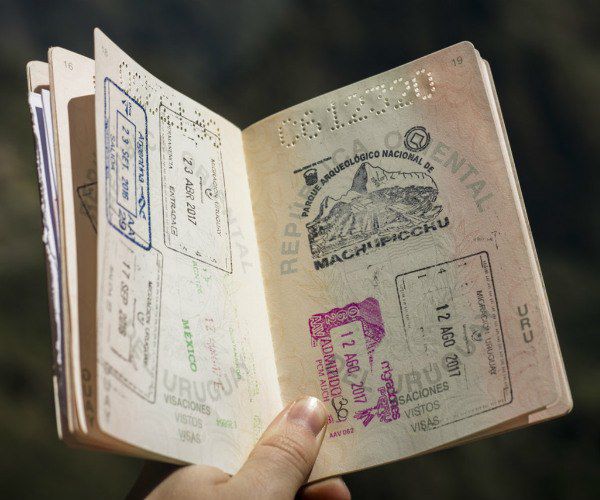
Japan, Singapore and South Korea have the world’s strongest passports, according to a new ranking. Citizens of all three countries can visit 189 nations without getting a visa before travel, according to the latest Henley Passport Index. Advisory firm Henley & Partners, which ranks countries’ passport power, said the tie was a “resounding demonstration of Asia’s growing power and influence on the world stage”. Japan was previously ranked in sole first place in the 2019 Henley Passport Index.
Asia’s best Meditation and Yoga Retreats

From the UNESCO World Heritage Sites of Angkor Wat in Cambodia and Borobudur in Indonesia, peaceful nature setting of northern Laos and Kerala in India, to the dramatic mountain ranges of the Himalayas in Nepal. Each resort offers their own unique character and charm.
Muang La Resort, Laos
Arrive in the capital city of Laos and experience the calm antiquity of Luang Prabang, a UNESCO Heritage city where buses and trucks are prohibited. Continue your travels onwards by road towards the northern part of the country where the landscape rises in steep green folds from the earth and imprint the terrain with cliffs, mountains and high plateaus.
Stay at the Muang La Resort, an intimate boutique lodge situated along the Nam – Ou river amidst lush greenery. In addition to being a great sanctuary to practice yoga and meditation, there is also plenty of opportunities to visit the ethnic minority tribes, experience the natural hot spring, enjoy a rejuvenating spa experience, take a cooking class, or enjoy a jungle adventure by Jeep, mountain bike, or on foot. On your final day take the river cruise back to Luang Prabang and enjoy a charming scenic experience of the local village life along the river banks.
Neeleshwar Hermitage, India
Arrive in Mumbai (formerly known as Bombay) and hop on a short flight to Mangalore and continue by road to Neeleshwar Hermitage, a hidden tropical destination set in a secluded palm grove beside the Arabian Sea. The Hermitage is spaciously built on twelve acres of land and offers a tranquil and secluded environment. The buildings are made of wood and laterite and modelled on palm-thatched fisherman huts overlooking a serene beach.
The restaurant offers a great selection of fresh seafood and vegetarian dishes. Great complement to your yoga and meditation sessions are the therapeutic treatments at their Ayurvedic wellness centre. Other activities include cooking classes and cultural sight seeing tours.
The Samar Villas, Cambodia
Fly into Siem Reap, the gateway to the UNESCO World Heritage Site of Angkor Wat, and practice yoga amidst its mystical temples and magical real of overgrown primordial trees. Siem Reap is home to charming old French shop houses, shady tree lined boulevards and colonial Chinese architectural buildings.
Treat yourself by staying at the exquisite boutique hotel, The Samar Villas, which has masterfully incorporated Khmer style aesthetics with a touch of modern design. An oasis of serenity, the property offers a luxuriant tropical garden and swimming pool, an extensive library, an elaborate cuisine, a lounge bar, and rejuvenating spa treatments. The resort offers sightseeing tours that include exploring the archaeological sites of Angkor, mountain biking, horseback riding, shopping and visiting art galleries.
d’Omah Resort, Indonesia
Arrive in Yogyakarta known as the centre of classical Javanese fine art and culture and stop on the way at an antique Joglo architecture style teak house, Pecel Solo, where you can experience a colourful array of traditional Javanese cuisine. Stay at the d’Omah, a private residence turned into a boutique resort where every room has received its own personal touch and design.
Once a week the resort organises a famous traditional ‘rijst – tafel’ experience where food is served by waiters regally dressed in the traditional garments carrying a variety of Indonesian dishes on flat woven trays. Practice Yoga at your private pool followed by a therapeutic message given by the local healer of the village. Activities offered range from a sunset dinner on the beach, a visit to the UNESCO Heritage Site of the ninth Century Borobudur to seeing local village life and rice plantations on bicycle.
Tiger Mountain Lodge Pokhara, Nepal
Arrive in Kathmandu, the capital of Nepal, and hop on a short flight to Pokhara, a charming town and base for many of Nepal’s popular trekking routes. Stay at the award winning property, Tiger Mountain Lodge, situated on a spectacular hilltop ridge a thousand feet above the Pokhara Valley. This exclusive property is an ideal sanctuary to practice yoga as you enjoy its panoramic views of Machhapuchhare and three of the world’s eight thousand metre high Himalayan peaks, Dhaulagiri, Annapurna, and Mansalu.
The Lodge provides Ayurvedic and shiatsu therapy and serene places for meditation. Their restaurant offers a wholesome cuisine that ranges from Nepali dishes to continental specialities made from local fresh ingredients and home-grown herbs. Activities include bird walks and day hikes through the forests and villages escorted by trained local guides. For the more adventurous, paragliding and micro-light flights against Annapurna’s backdrop are also available.[/vc_column_text][/vc_column][/vc_row]
New ultra-luxury brand for MSC Cruises

MSC Cruises has announced plans for a new ‘ultra-luxury’ brand targeted at the ultra high net worth. The world’s largest privately-owned cruise company has commissioned construction of new four hyper luxury vessels, with a value in excess of 2 billion euros.
The dedicated super luxury brand aims to reach a new segment of wealthy clientele and sits alongside MSC Cruises’ current premium brand, The Yacht Club. The new vessels are set to offer an even more luxurious, exclusive and personalised experience in their 500 state rooms.
The first of these uber-luxurious liners will come into service in 2023, with the remaining ships launching once per year over the following three years.

The memorandum of agreement with renowned shipbuilding company Fincantieri is part of an ambitious, industry-unprecedented 13.6-billion-euro investment plan, which will see the expansion of the MSC Cruises fleet to 29 ships by 2027.
Interiors will be shaped by long-term MSC Cruises partner, De Jorio Design. World-renowned for combining their architectural savoir-faire with innovative creativity, the cruise ship interior experts have been tasked with adding their quintessential Italian elegance to this new project.
This foray into the ultra-luxury segment heralds a new era for MSC Cruises and the cruise ship industry, with experts and luxury travellers alike watching with great anticipation.
By Paul Johnson
The happiest countries in the world

Perhaps your idea of happiness is a pristine beach off the Caribbean, a glass of vintage red on the French Riviera or an unexpected hotel upgrade, but what about the happiness of a nation? The winner of this year’s World Happiness Report may come as a surprise to some. For the second time in a row, Finland has been crowned the happiest nation on the planet.
Using data collected over the previous three years by independent poll group Gallup, the UN report ranks countries on “how happy their citizens perceive themselves to be” based on income, freedom, trust, healthy life expectancy, social support, generosity and perceptions of corruption.
2019 World Happiness Report top ten
1. Finland
Despite not having the highest GDP of the Nordic countries, Finland tops the happiness list. Its robust social safety net, personal freedoms and great work-life balance give it an edge on its Scandinavian neighbours. Others point to the nation’s fascination with nature and the outdoors, while some suggest its happiness lies in its culture of generosity to others.

2. Denmark
With its stable government, low levels of corruption, and high-quality education and healthcare, Denmark consistently ranks as a very happy nation. Many argue that it’s a more abstract Danish concept that gives it its edge, however. Sometimes translating as cosy, ‘hygge’ refers to harmonious shared experiences, such as family picnics or a glass of wine with friends.

3. Norway
With an equally generous welfare system and high levels of social equality, Norway comes in third place. Its majestic mountain ranges, spectacular glaciers and deep coastal fjords make the country an ideal setting for its popular pastimes of fishing, hiking and skiing.

4. Iceland
A magnificent land of volcanoes, geysers, hot springs and lava fields: Iceland is an impressive sight. It’s also one of the happiest. Alongside its striking nature, its space, cleanliness and social equality make it a great place to live.

5. Netherlands
There’s much more to the Netherlands than canals, tulips and windmills alone. It’s a progressive, eco-friendly nation sparkling with political freedom, high levels of social equality and modern creativity. The multicultural nation scored especially well in the category of immigrant happiness and also ranked very highly in terms of life expectancy.

6. Switzerland
A holiday in Switzerland might be more about fondue, chocolate and alpine pursuits, but scratch beneath the touristy surface and you’ll find a strong community spirit, traditional family values and outdoorsy lifestyle. While foreigners might balk at the apparent obsession with rules and regulations, Switzerland’s uber efficient healthcare and public transport, as well as its low crime rate more than compensate.

7. Sweden
Sweden’s blue and yellow flag might recall flat packed furniture for some, but it also symbolises the best of Scandinavia: stylish design, crisp coastal air and a united community. Like its Nordic neighbours, Sweden also puts a strong emphasis on physical and mental well-being, with a public holiday dedicated to sporting activities.

8. New Zealand
With its dramatic ravines and lush wild pastures, New Zealand was the setting for mythical Middle Earth in the most famous “Lord of the Rings” films. But it’s not just its nature which makes it one of the happiest on the planet. The kiwi community is one of the most resilient and homogenous in the world, uniting in challenging times, for example after its 2011 earthquake and more recent terrorist attack.

9. Canada
Majestic valleys, glistening lakes and fresh pine forests. Life in Canada is as sweet as its maple syrup. While its beauty perhaps lies in its natural landscapes, even its urban populations are some of the happiest on the planet. The North American country boasts low unemployment, excellent healthcare, and great infrastructure.

10. Austria
Quaint mountain villages, baroque architecture, rich history and energising mountain air combine in the tenth happiest country. The birthplace of the waltz and many classical composers, over a half of the nation is covered by the Alps. On the whole, locals benefit from cultural richesse and a great social life in this European state.

By Paul Johnson

